How to Stain Wood Different Colors Without Bleeding
I am building the Restoration Hardware Inspired 1900s Boulangerie Table from The Design Confidential. The plans call for different pieces of wood as the main panels on the tabletop. In an earlier post, I shared my method of making the legs out of 2x4s. Today, I will share the method I used to create a striped panel with stain and plywood.
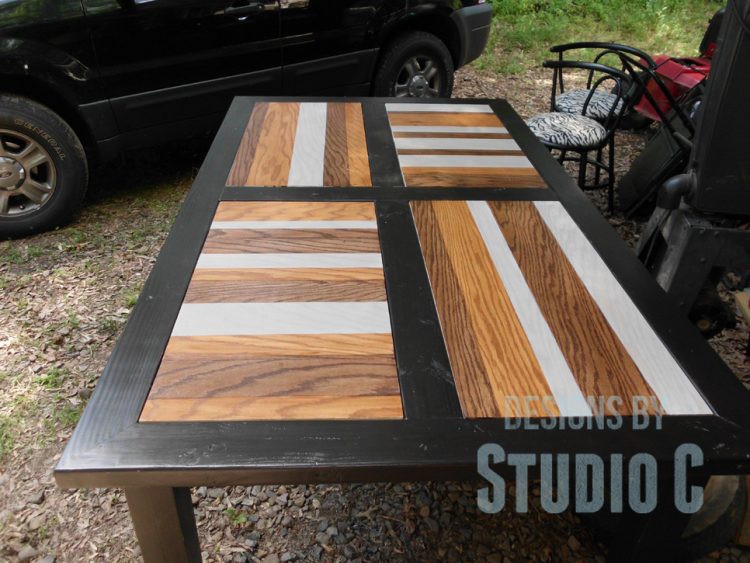
Materials:
- Oak plywood
- Various wood stains (I used Rust-Oleum’s Ultimate Wood Stain in Paprika and Sunbleached, and Minwax Wood Stain in Special Walnut)
- Frog tape or blue painter’s tape (<– affiliate link!)
- Pencil and straight-edge
Any species of plywood scraps can be used. I used oak because I like the way the stain looks on it. I started by cutting my pieces to the sizes I need and thoroughly sanding the pieces with 80 grit sandpaper, then 120, and finally with 220 to create an ultra-smooth surface.
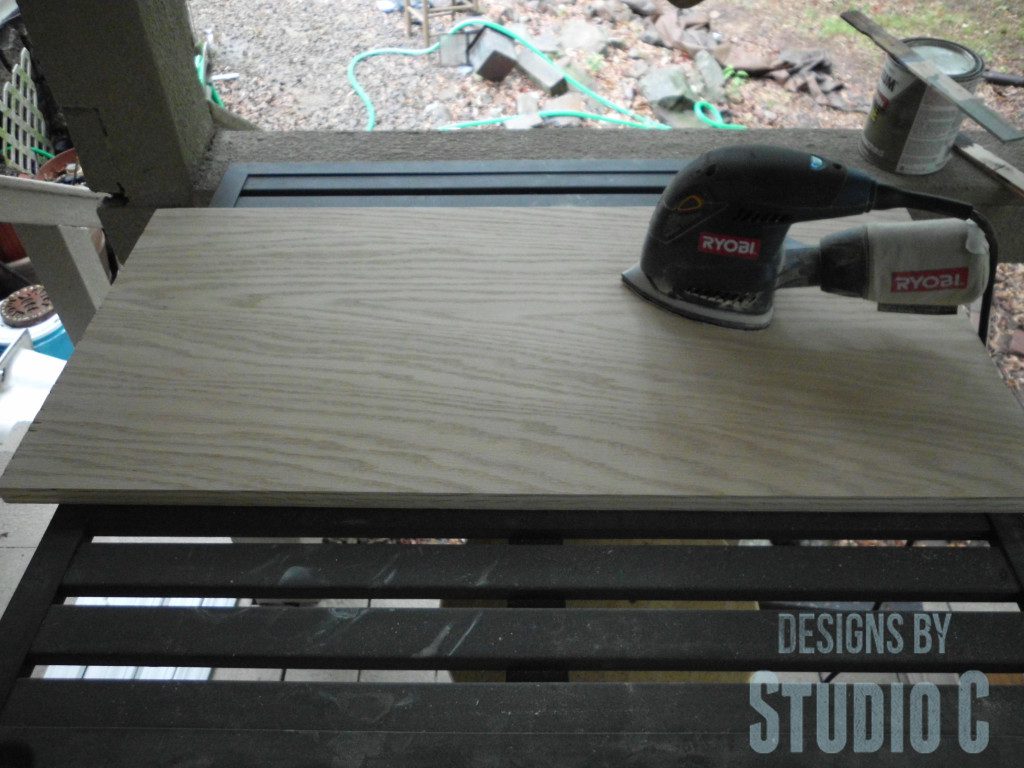
I lightly drew lines on the plywood in the same direction as the grain. The stripes can be as narrow or wide as desired! Next, using the Frog tape (well, blue tape too – I ran out of Frog tape!), I taped off an area or two to stain with the first color (Walnut). I drew arrows for myself indicating which “stripe” I would be painting – I tend to get confused!!

After I wiped the stain off, I removed the tape…
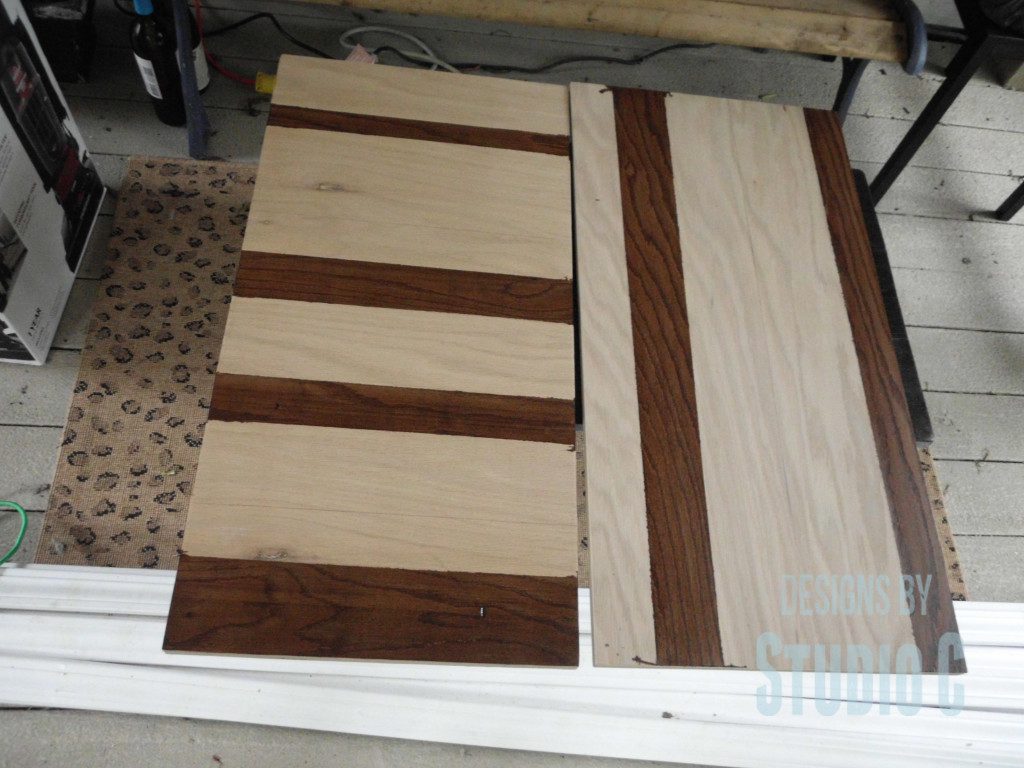
When the first stain dried, I taped off the next set of stripes. I applied my second color of stain (Paprika). I removed the tape after wiping the stain off…
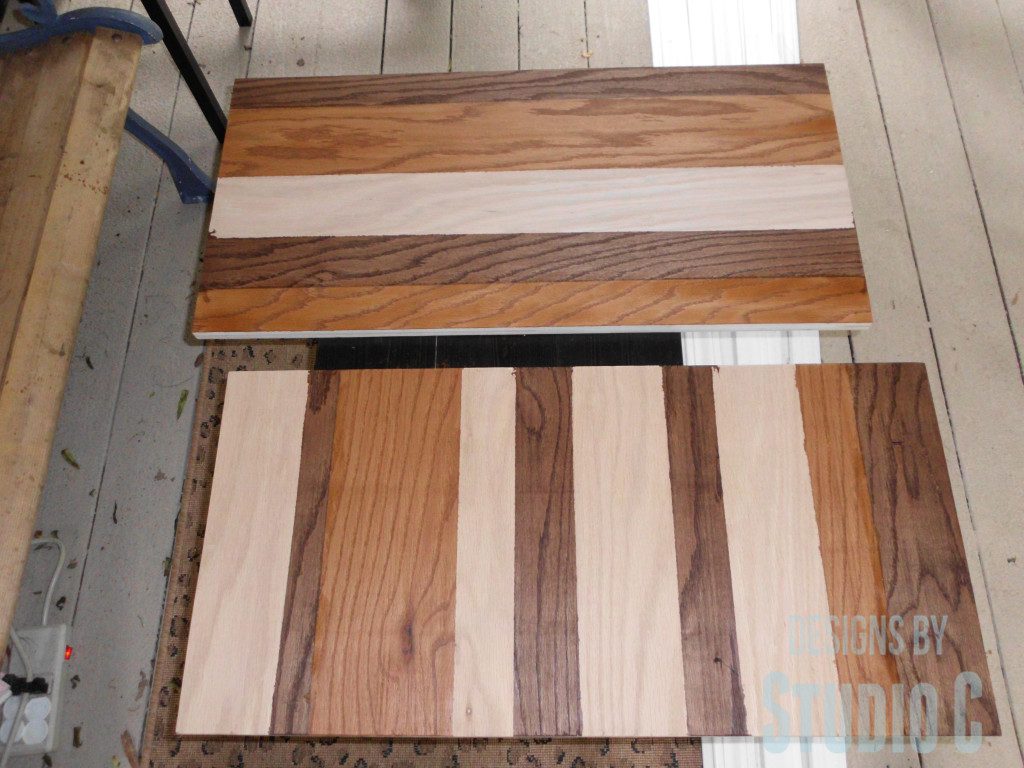
After the second stain dried, I taped off the remaining areas and used the third stain color (Sunbleached). Then I let it completely dry overnight.
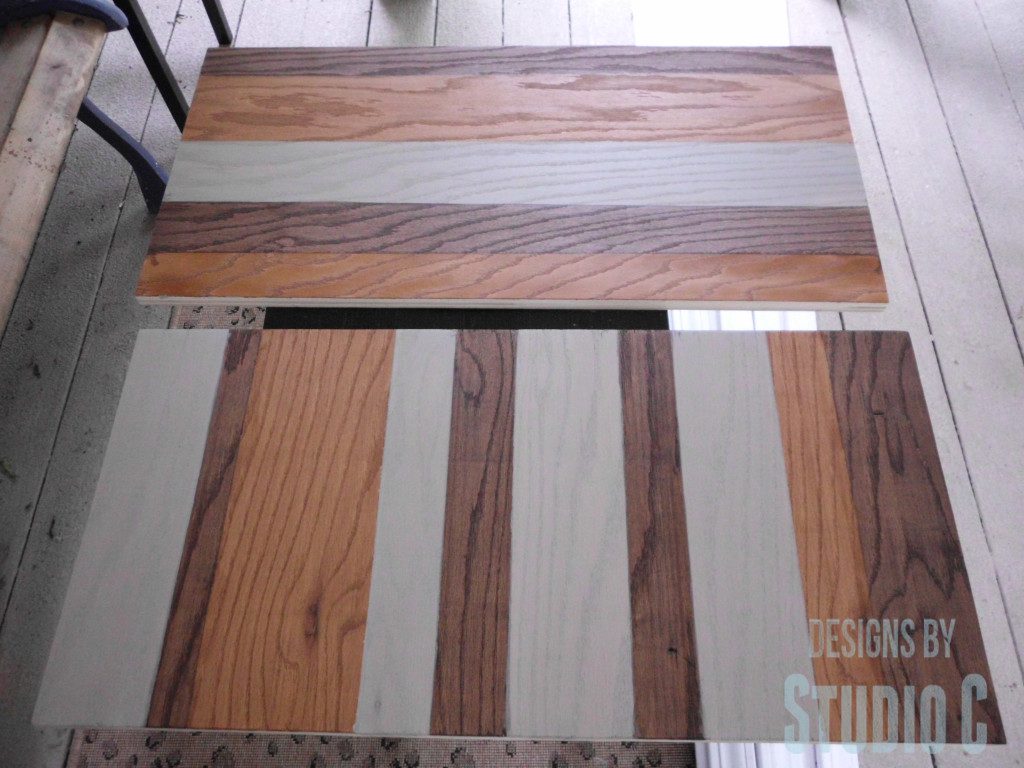
Once the panels were dry, I sealed each of the panels with three coats of Rust-Oleum’s Ultimate Polyurethane in Satin. Between the second and third coat, I used 220 sand paper to smooth the surface. I let it cure completely(7 days according to the can).
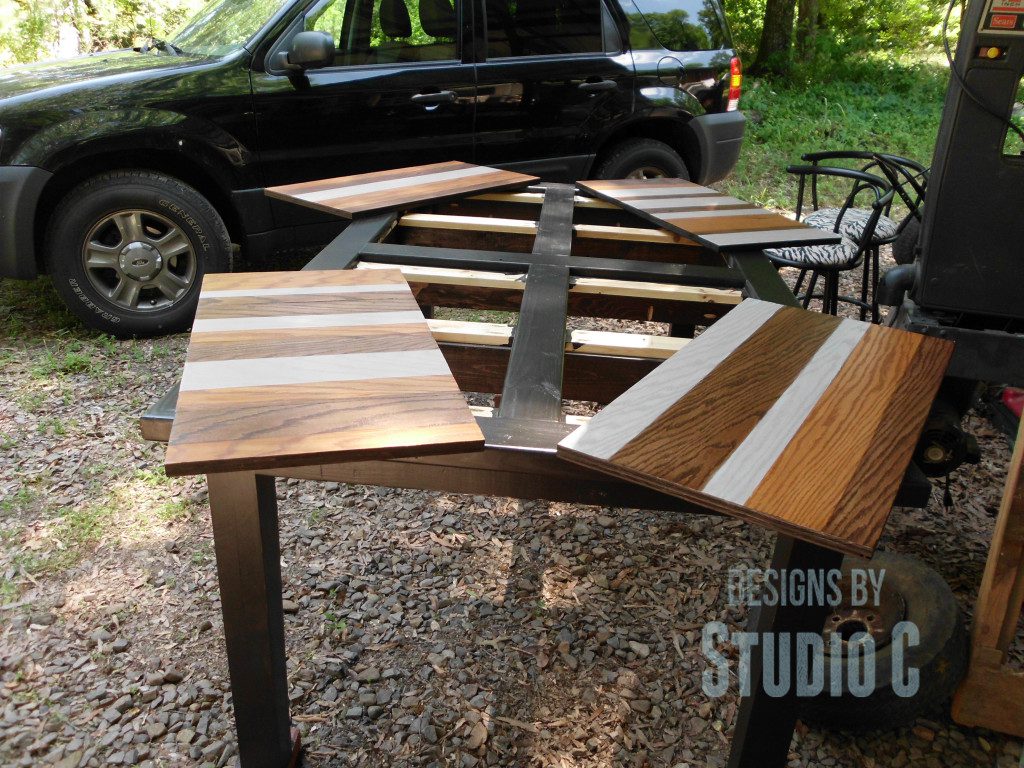
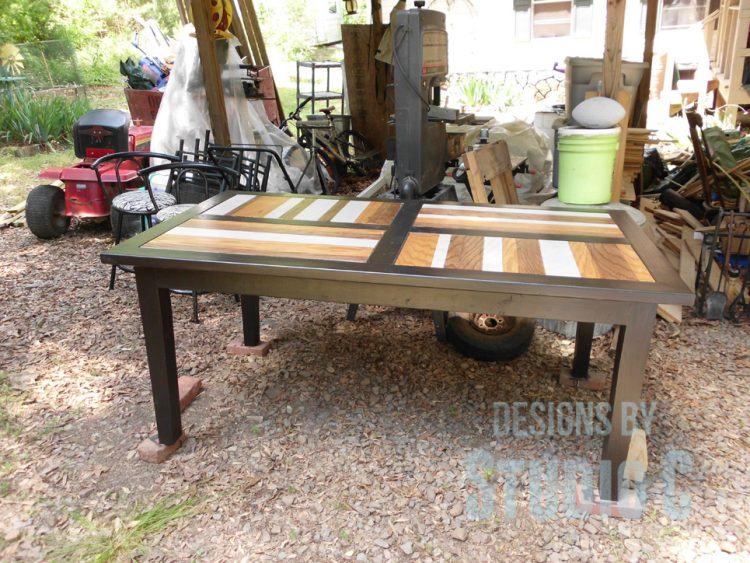
These striped panels from stain and plywood can be made for any use – why not bright colors for wall-art? Neutral colors for chair seats? The possibilities are endless! But the most important part is to be creative and HAVE FUN! Have questions about how to stain wood different colors without bleeding? Leave a comment below!
Originally posted 2013-12-26 08:00:32.

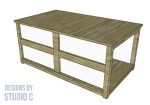
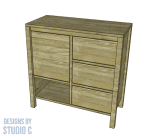

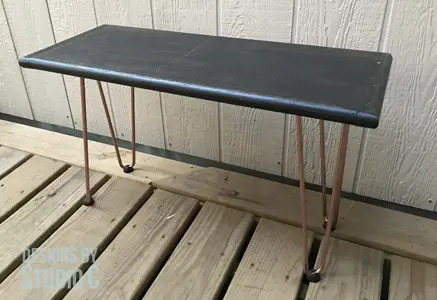

20 Comments
After the first set of stripes were stained, you say to re-tape for the next set of stripes. Does the tape that you place (over the first set of stripes that were stained) ruin the original stripes?? I am making a similar project and am afraid that the blue tape over the stained stripes will harm the stain.
Hello, there! No, the tape will not hurt the previous stripes. Hope this helps! Would you mind sharing photos of your completed project? I would love to see it! Thank you for stopping by!
I like the pattern in the plywood! I wouldn’t dream of making it though.. I do excellent just by admiring your works 🙂
Thank you so much, Vinma! I love how it came out!
Pingback: free DIY woodworking plans to build a paneled trunk
I was wondering how you perfected the lines? In one picture some of the lines have some rough edges from the stain but in following pictures you can see that the line is now perfectly straight… How did you correct that? I am wanting to make a desk with a panel and would love to give the top some character with this method and maybe a pop of color with a red stain… 🙂 Thank you so much@
Hello, there! What I did to get the straight lines was tape off each section with painter’s tape as I stained it. As I was applying the stain, I got close to the tape line without actually touching it. Once all of the colors of stain were dry and the tape removed, I touched up the “line” areas with a sponge brush. Hope this helps! Let me know if have any other questions!
Hi, can you explain the ‘sponge brush’ step more plese? I’ve had big problems with the stain ‘bleeding’ and not being a crisp transition between colors. Thanks, Doug.
Hi, Doug!
The stain will definitely bleed under the tape. When applying the stain, do not apply it directly on the tape as one may do with paint – stop about 1/16″ from the tape line. Once all of the stain colors have been applied as stripes, the areas that are bare where the tape line was can be filled in with a bit of stain on a small sponge brush. Does that make sense?
Hi Cher, yes the 1st part makes sense, but I still
don’t get exactly how to achieve that totally crisp line. Do you use a
straight-edge with the sponge brush, or just have a go ‘free-hand’? I’ve searched YT for an instructional video but can’t find one-do you know of any that demonstrates you’re technique? Many thanks for your reply, post & inspiration Cher. Best wishes, Doug.
Hi, Doug!
I did it freehand following the pencil line that is to be drawn first before applying the tape. It is much easier to use a brand new brush, as well. Hope this helps!
I am just now getting into making videos and will add this one to the list! Thank you for the kind words – I really appreciate it!
Hi again Cheer, thanks so much for clarifying this point. I’m sure your venture into instructional videos will be welcomed by many as your
style seems both relaxed & concise. As to the ‘Freehand’ component of the technique… it will demand I reduce my afternoon libations of Gin & Tonic-a rather demanding price to pay here in the tropics of northern Thailand…lol. Best wishes, Doug.
So there is no bleeding with the stain? Frog tape is notoriously bad when it comes to bleeding ( in my experience ). I was thinking that the quality oak might be the reasoning for the no bleeding, considering oaks smooth surface.
Hi, Andrew! There was a bit of bleeding with the first sample panel I made, When I was making the panels for the table, I did not apply stain all the way up to the tape – I stopped just short of it. Once all of the “stripes” were done, I used a small sponge brush to touch up the areas between the stripes. It worked perfectly! Thanks for stopping by!
Did you happen to download the plans for the table from The Design Confidential? The page is inaccessible to me for some reason.
Hi, Mark! I actually designed the plans for The Design Confidential and it seems like the site is down… I’m not sure what is going on but hopefully it will be back up soon!
I see, are you able to email them to me at mark@urbanworks.co.nz? I’d be really grateful ?
Pingback: Build a Paneled Trunk | Designs by Studio C
Pingback: Build a Modern Chunky Coffee Table | Designs by Studio C
Pingback: Build Your Own Modern Dining Table: DIY Plans